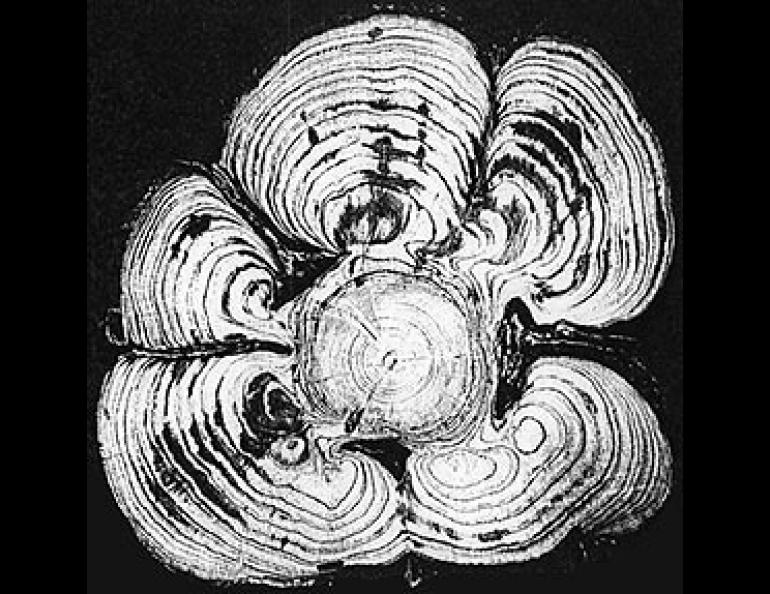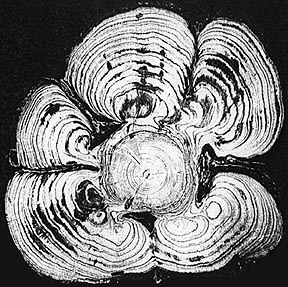
Burls and Human Cancer
There is enough similarity between the growth of burls on Alaskan spruce trees and the occurrence of some cancer in humans that the two could be different manifestations of the same phenomenon.
Every spruce burl that I have seen cut into shows highly ordered structure in the region of abnormal growth. These are not really cells gone wild; instead, they are just grow at a very fast rate under the same rules that govern the structuring in the normally growing tissue. This type of growth also is typical of some animal cancers.
When several burls grow on a single spruce tree, it is likely that they all began growing at once. Evidence for this simultaneity is seen when annual rings in the tree and its burls are counted to determine which year each burl began. So it would seem that whatever agent controls the abnormal growth is spread throughout the tree in a single year. And there has to be some mechanism which determines where on the tree burls will grow.
Dr. Les Viereck of the Institute of Northern Forestry at Fairbanks points out that the trees which develop burls often tend to be undergoing environmental stress. Trees near timberline or on north slopes where living is tougher are prone to burl growth. The analogy of smoking's relation to cancer hardly needs mention.
If this suggestion is correct, that there is similarity between the occurrence of burls and cancer, then research into what causes burls in northern spruce trees might advance human cancer research. The simpler structure of trees compared to animals might more quickly yield information on deviant growth processes that could then be applied to the understanding and control of human cancer.





